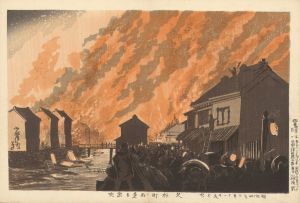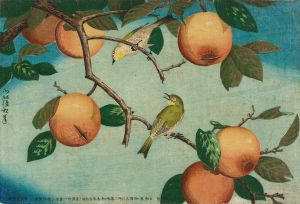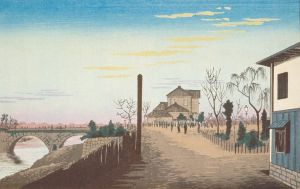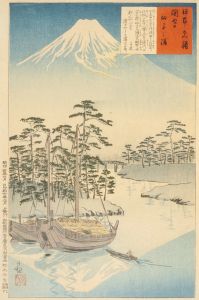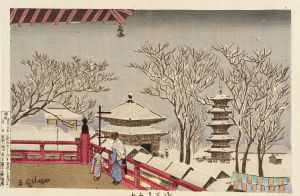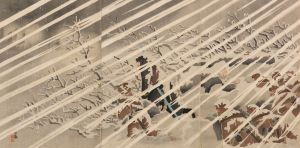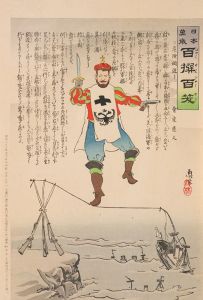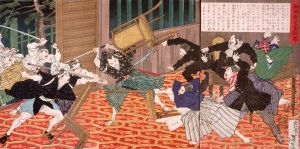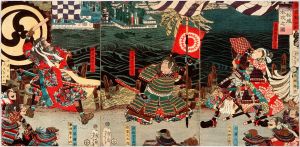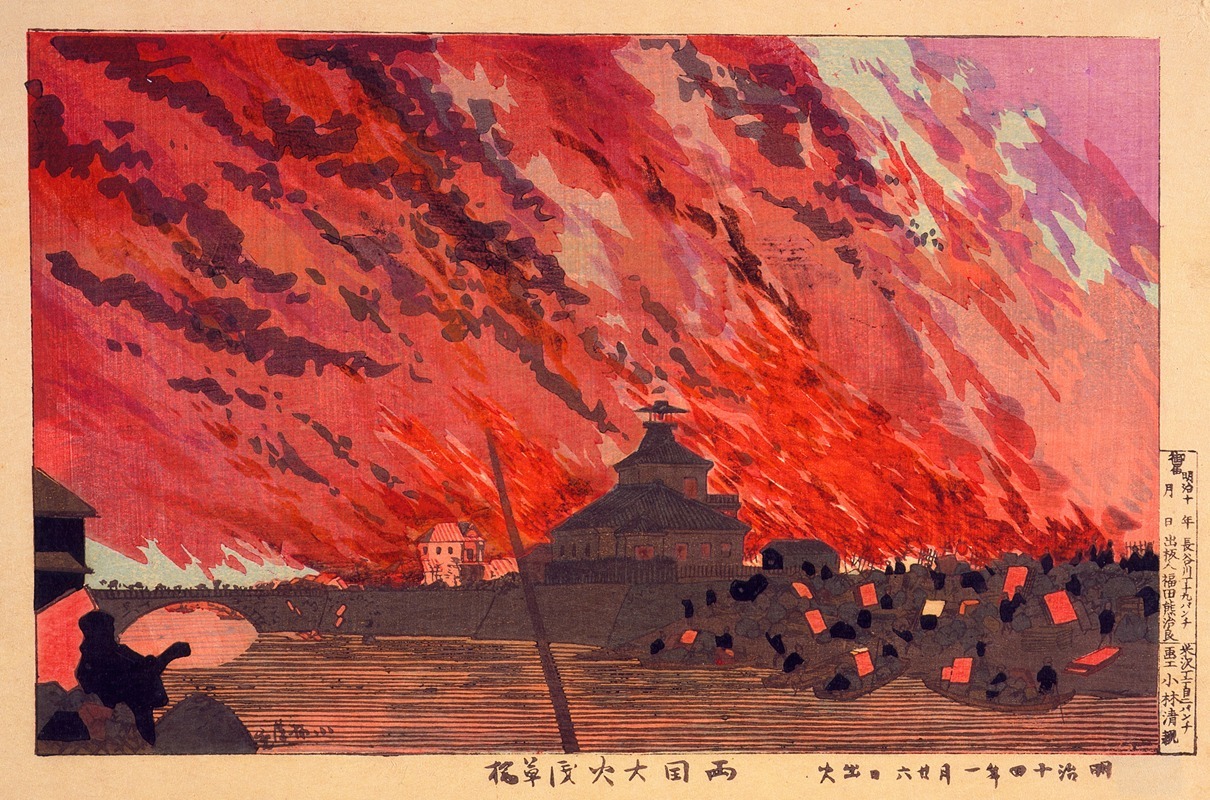
The Great Fire at Ryōgoku Bridge, Viewed from Asakusa Bridge on the 26th of January, 1881
A hand-painted replica of Kobayashi Kiyochika’s masterpiece The Great Fire at Ryōgoku Bridge, Viewed from Asakusa Bridge on the 26th of January, 1881, meticulously crafted by professional artists to capture the true essence of the original. Each piece is created with museum-quality canvas and rare mineral pigments, carefully painted by experienced artists with delicate brushstrokes and rich, layered colors to perfectly recreate the texture of the original artwork. Unlike machine-printed reproductions, this hand-painted version brings the painting to life, infused with the artist’s emotions and skill in every stroke. Whether for personal collection or home decoration, it instantly elevates the artistic atmosphere of any space.
"The Great Fire at Ryōgoku Bridge, Viewed from Asakusa Bridge on the 26th of January, 1881" is a woodblock print by the renowned Japanese artist Kobayashi Kiyochika. Kiyochika, born in 1847 and active during the Meiji period, is celebrated for his innovative approach to ukiyo-e, a genre of Japanese art that flourished from the 17th through the 19th centuries. His work is noted for its incorporation of Western techniques and perspectives, which he skillfully blended with traditional Japanese styles.
This particular print captures the dramatic scene of a fire that broke out near Ryōgoku Bridge in Tokyo on January 26, 1881. Fires were a frequent and devastating occurrence in Edo (modern-day Tokyo), often referred to as the "flowers of Edo" due to their regularity and the way they shaped the urban landscape. Kiyochika's depiction of the fire is not only a representation of a specific historical event but also an exploration of light and shadow, a hallmark of his artistic style.
In the print, Kiyochika illustrates the fire's ferocity and the chaos it caused. The flames and smoke are vividly rendered, dominating the composition and highlighting the vulnerability of the wooden structures that characterized much of Tokyo's architecture at the time. The view from Asakusa Bridge provides a vantage point that emphasizes the scale of the disaster, with the Ryōgoku Bridge and the surrounding area engulfed in flames.
Kiyochika's work is distinguished by his use of chiaroscuro, a technique that employs strong contrasts between light and dark to achieve a sense of volume and three-dimensionality. This technique is evident in the way he captures the glow of the fire against the night sky, creating a dramatic and almost haunting atmosphere. The reflections of the fire on the water add to the sense of movement and urgency in the scene.
The print is part of a series of works by Kiyochika that document the rapid modernization and transformation of Tokyo during the Meiji era. This period was marked by significant social, political, and technological changes as Japan opened up to the West and began to industrialize. Kiyochika's art reflects these changes, often depicting the juxtaposition of traditional Japanese elements with new, Western influences.
Kiyochika's ability to convey the intensity of the fire and its impact on the city is a testament to his skill as an artist and observer of his time. His work provides valuable insights into the challenges faced by Tokyo as it navigated the complexities of modernization. Today, "The Great Fire at Ryōgoku Bridge, Viewed from Asakusa Bridge on the 26th of January, 1881" is appreciated not only for its artistic merit but also for its historical significance, offering a window into a pivotal moment in Japan's history.
Kiyochika's prints, including this one, are held in high regard and can be found in various museum collections around the world, where they continue to be studied and admired for their unique blend of traditional and modern elements. His work remains an important part of the narrative of Japanese art history, illustrating the dynamic interplay between past and present during a time of profound change.





